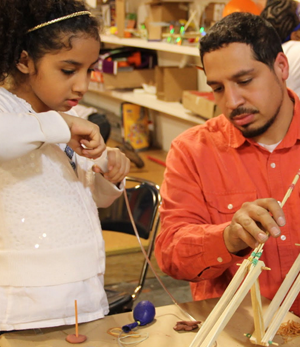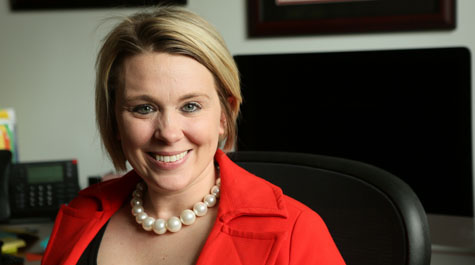W&M professor launches program to promote science among middle schoolers
W&M Assistant Professor Meredith Kier has studied science education for years, but there’s one equation she’s yet to solve: How do you get kids in underserved communities to apply science and math in ways that are applicable to their lives?
This summer, Kier, along with Howard University math education professor Deena Khalil, will embark on a three-year research program that aims to test that question using a unique formula. Kier and Khalil hypothesize that when you bring together a community of middle school teachers, engineering professionals, and science and mathematics educators to incorporate real-world engineering problems in their classrooms, middle school students will be more engaged in school and develop interests in STEM careers.
“Research shows that kids are turned off from science and math by the time they reach high school, particularly females and students of color,” she said. “So if we can focus on students at the middle school level, we might make more of an impact with sustaining interests in science and math that they may have developed in elementary school.”
The project, titled E-Communities, is a longtime dream for Kier, who first envisioned a project that could build authentic partnerships between teachers and professionals as a graduate student. Her idea recently came to fruition thanks to a grant from the National Science Foundation.
“E-Communities is about bringing a community together with a shared goal of motivating students to use engineering design to create solutions and to consider STEM careers for their futures,” she said. “Each player in the community is coming in with individual expertise — the teachers know what their students are interested in and capable of as well as their content, the engineers know how to use unique design skills to solve real-world problems, and we, the STEM educators, know how to support teachers to integrate this shared knowledge into their math and science curricula.
The NSF grant will fund a three-year pilot program in Prince George’s County, Maryland, an area just outside of Washington, D.C., with twenty-four math and science teachers in two schools. These schools serve predominately African American students with many students receiving free or reduced lunch. During that period, a group of about 20 engineers — ranging from technicians to Ph.D.s — will meet virtually with teachers to plan unique design challenges for students and, as the school year progresses, share the successes and challenges related to classroom implementation. Students will also have the opportunity to consult with the engineers during periodic Skype sessions and ask questions in an education-friendly online social network. 
“It’s common to bring engineers into the classroom to speak to kids as role models,” said Kier. “But to have them actually coming together with the teachers beforehand to plan and think around new lessons and curricula is a very unique concept.”
She estimates that approximately 2,400 students will participate in the program every year, each of whom will be assessed with post-interviews and affect surveys to gauge the program’s influence in increasing STEM awareness and interest. Over time, Kier and Khalil hope that teachers will build their confidence to teach through large, interdisciplinary design-based challenges.
“There’s a lot of research tied to this,” she said. “We really want to understand how teachers’ understanding of design-thinking improves their ability to plan interdisciplinary, project-based lessons in science and math, how students’ awareness of STEM careers is influenced through these experiences and whether certain design challenges are more effective than others. It’s more than just professional development. It’s about understanding how this model influences the community and how we can replicate it with fidelity.”
Ultimately, Kier hopes the model is one that can be expanded to different cities, schools, and grade levels. “We definitely want to scale up,” she said. “With the lessons we learn here, we can make adaptions to other unique areas, such as rural communities, where there is less access to STEM professionals. If we can create authentic bridges between teachers and professionals and develop common and achievable goals for students, I think this will be a success.”
 Skip to main content
Skip to main content

